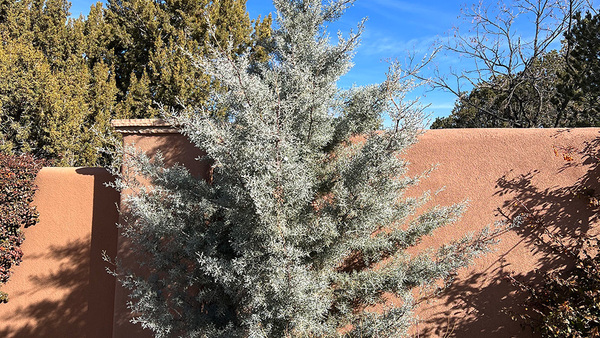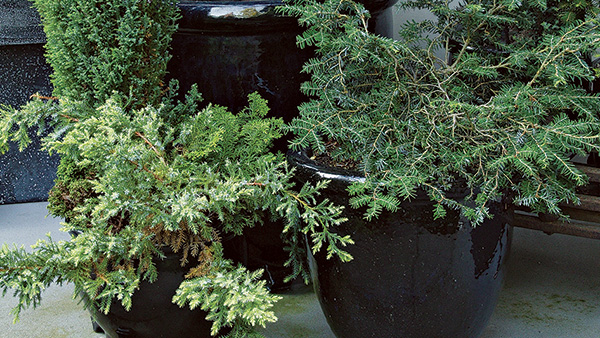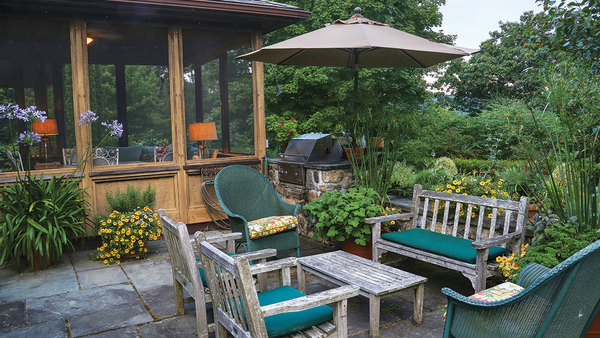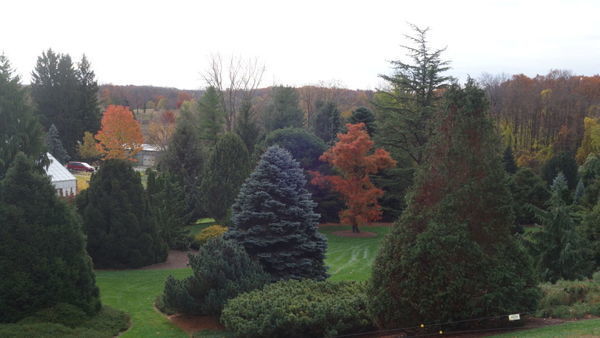
Telling the difference among conifers can be tricky. To me, they are all Christmas trees. But calling them such doesn’t really mark me as a discerning gardener. There is, however, a quick way to tell these three common conifers apart.
Look for the number of needles that come out of the same spot on a twig. If a twig bears needles in groups of two, three, or five, you can safely call it a pine. If the twig carries its needles singly, it’s a good bet you’ve got a fir or a spruce. Pull off a needle, and roll it between your fingers. If it feels flat and doesn’t roll easily, it’s a fir. If the needle has four sides and, thus, rolls easily between your fingers, it’s a spruce.
 |
 |
 |
| Spruce | Fir | Pine |
Photos: Michelle Gervais


















Comments
haha. This question popped up when I realized I referred to them all as christmas trees. Thanks for the concise article!
oh hey i have all of these in my yard!! hahaha
Plant some Blueberries around them..
..if you roll the berry and squeeze it gently and you hands and socks turn blue...it's a / slurpee b/ blue spruce c/ blueberry
Why? For the dramatic effect? I agree, but would like to know
Conifers tend to slightly lower the pH ("acidify") the soil they grow in, and blueberries thrive in slightly acidic soil.
I'm pretty sure they have their labels on the fir and spruce reversed. The one on the left looks like a blue spruce, and the one in the middle appears to be a Frasier fir. The pine is clearly a pine.
You are right albert! The left is a blue spruce, the middle looks like a balsam fir, then one on the right a pine. Can't tell what species of pine
I was thinking that the one on the left is a Douglas Fir from NE Arizona, and the one on the Right is a Spruce.
Douglas-fir are not true firs. A whole different genus.
Really?
I was unaware of that.
Thank you
I now have read up on that.
Very interesting.
I think you are wrong, the one on the left, to me looks like it is a Douglas Fir.
However, I admit I am not an expert.
What kind of Fir did you think it was?
Also what part of the country do you live in?
I am in North East Az. in what we call the White Mountains.
Amazing, yet another site labelling pictures incorrectly and rendering the whole article useless. I saw this same issue with a site discussing walnut variations and came away more confused than before I read it.
Please may I ask what site had the article on walnut variations? I am also disgraced by the number of time people post inaccurate horticultural information on the internet.
Ok. I'm making a potpourri, so can anyone tell me the difference between the scent a pine gives vs. the scent of a fir or a spruce? Come on experienced noses I know you're out there somewhere.
a really nice scent could come from the white fir, Pinaceae Abies concolor. It smells like oranges!
Bread -
To me, a pine has a much more resinous, pitchy smell, more like turpentine, where a spruce or fir is more woodsy. But that's just my opinion
Friendly fir, spikey spruce. Pine trees have leaves that come in bundles called fascicles; ponderosa pine have two and bristlecone pine have 5! Pine leaves are acicular (long, needle-like) and spruce and fir leaves are linear. I think (maybe) the picture on the right is a white pine? They have such thin, feathery leaves (needles), so that's my guess. Also, look for the cones. They differ greatly. Pine cones have an apophysis on each scale (that's the part of the scale that is visible when the cone is closed. Some species have armed umbos. The umbo is the protuberance (part that protrudes out) on the apophysis. The arming is a tiny little spike that can draw blood. Bristlecones bear their name due to this nasty little feature. To my knowledge (I'm a forestry student in Colorado), I don't think spruce and fir have umbos on the cones. Hey, I'm still learning! I hope this helps.
My language only has one word for all these... and we have quite a lot of types despite being a boring-ass continental climate.
The other thing that I remember in telling spruces from firs and pines is four S - the needles on a spruce are:
Short
Stiff
Square
Single
If the needles are flat it could also be hemlock.
this is really helpfull :) ! thank you
"Spikey Spruce, Friendly Fir" Spruce needles are spikey. Fir needles feel soft and don't prickle your fingers when you touch them.
Log in or create an account to post a comment.
Sign up Log in